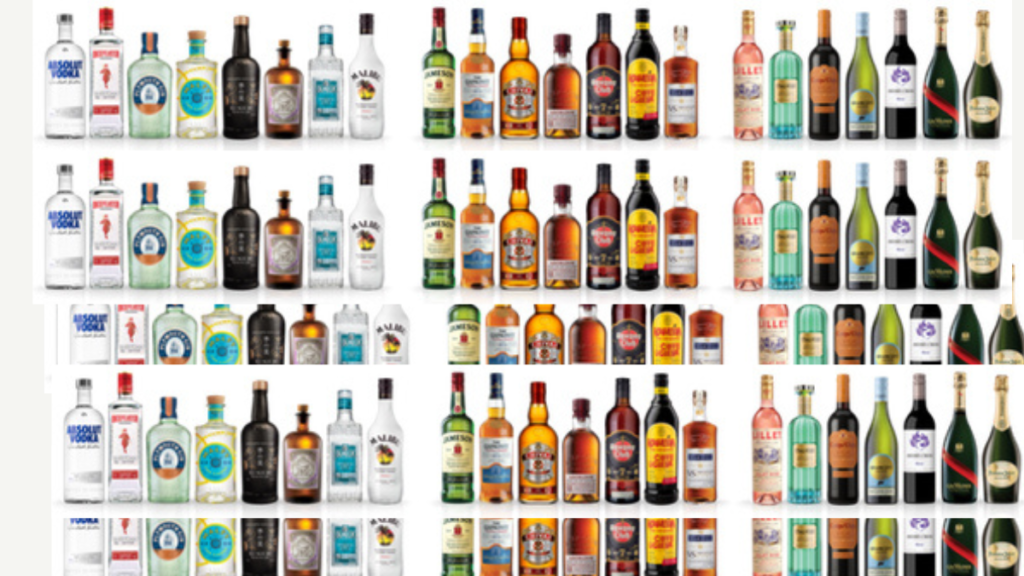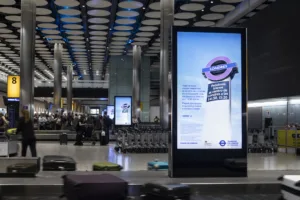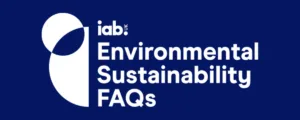
Q&A with Taneesha Kumar, digital media lead at Pernod Ricard UK
Hawk Talks is our regular series in which we speak to industry experts about current themes and issues in their sector. This month, Chris Childs talks to Taneesha Kumar, digital media lead at Pernod Ricard UK about her role, brand and industry challenges – and the opportunities these also offer.
Tell us a bit about your role at Pernod Ricard
My role as digital media lead at PRUK is underpinned by four core pillars.
Firstly, I work closely with all our brand teams to build out our paid media strategy across campaigns (from briefing through to planning, activation, and optimisation). Consumer journeys have never been linear, but they are becoming increasingly complex; to reach people effectively, it’s essential to understand how they consume media. This process includes managing the relationship with our agency and media owners / platforms; learnings and insight are shared with our brand teams so that all planning decisions result in consumer-centric activations.
I also work alongside our agency to safeguard the quality of our media buying so that we only appear in environments that are brand safe and contextually relevant.
In view of the complexity of digital media and the changes to the landscape, a pivotal part of my job is looking at our acceleration in terms of data, publisher, and platform opportunities. This includes overseeing our tech stack and Test, Learn and Optimise roadmap to ensure we trial new options that, once proven, are brought into our brand teams.
Finally, this complexity, along with automation being the new normal in traditional channels, makes upskilling our brand teams on the everchanging digital world a core part of the role.
What are the challenges you face, from both a brand and industry perspective?
A huge number of challenges impact the standard of advertising, with ad fraud, inventory quality and viewability three of the biggest for us, and we work with our media agency, content verification partner and media platforms to tackle these. We have an internal metric to determine the compliance of our inventory; it looks at our publishers’ compliance rates and the cost of delivering compliant impressions which ensures we are optimising to the highest quality inventory.
- Ad fraud – we need to ensure our ads are delivered, seen, and engaged with by humans – not bots – on the right domains. There are lots of fraudulent tactics, such as ad stacking, that prevent this from happening.
- Inventory quality – open auction inventory means our ads can be delivered anywhere (within our demographic and interest criteria); we need our advertising to be placed in brand safe environments, in front of relevant consumers and alongside the right content (specifically we can’t appear against material for people under 18). This is where tools such as inclusion / exclusion lists, combined with targeting capabilities, become so important.
- Viewability – monitoring and optimising against compliance rate, cost per compliant impression (CPCI) and time-in-view has significantly helped to improve our viewability performance. Ultimately our ads can’t be effective unless they are seen.
The industry is also undergoing seismic changes in terms of privacy and legislation. From a brand perspective, measuring conversions without a direct-to-consumer environment has always been challenging. Apple’s depreciation of its IDFA has made it very difficult to track conversions, resulting in increases in the cost of media. The changes have pushed advertisers to adopt a more holistic measurement approach with much broader KPIs, including brand lift / brand awareness metrics.
Working with Hawk we can prove the effectiveness of our marketing through the various studies the platform enables. Its footfall tracking technology In-Store Impact, for example, measures incremental store visits in real-time, across mobile, audio and digital out-of-home (DOOH). There is also a survey tool built into the DSP which looks at things like brand awareness and perception, thereby allowing us to measure the effect of our advertising. And through Hawk we can access IRI studies which prove the impact of our advertising on instore sales.
The death of the cookie – when it happens – will bring its own issues, with brands relying more on first party data approaches and publishers and advertisers having to work even more closely together to find the best ways of reaching our consumers.
The huge number of ad formats needed to cover off programmatic video and audio, mobile, tablet, and desktop display units is another challenge – and another reason to work with Hawk; they know what drives the best performance and deliver this with stand-out creatives from the in-house production team. Moreover, they work with our in-house studio to ensure that messaging remains consistent across our campaigns.
With supply chain transparency another concern for advertisers, stakeholders need to come together to develop best-in-class practices that enable it with contractual agreements, in-house teams that ask the right questions, clarity around tech stack ownership, etc. Ultimately, it’s about ensuring that relationships with partners and agencies are built on mutual trust.
From a brand perspective we target similar audiences, which can result in overlap – meaning we work closely with partners to manage this and determine the best strategies and formats for each one. Each brand needs to stand out, which is where creativity becomes so important.
In your role overseeing programmatic activity across a broad range of brands, each with their unique audiences, how do you determine which strategies, ad formats and channels work for each in this fast-paced world? And how do you ensure brand managers and other stakeholders within Pernod Ricard have the up-to-date insight on the opportunities available to them?
The role of media (the channels, strategies, and ad formats) depends on the audience, the objectives we are trying to achieve, and where that sits in the funnel. Digital / programmatic can be used throughout the funnel, whether to raise brand awareness through mass reach tactics and impactful formats, drive consideration through engaging content, or prompt a purchase.
We collaborate with our media agency, explaining what we are trying to achieve and, as part of our response to brief process (in which we align on channels and take a deep dive into platforms and partners) we understand more about how our audience are consuming media.
We also work closely with all our media partners to gain key planning insights. Hawk has access to powerful data (via Skyrise Intelligence) that allows deep dives into the physical and digital behaviours of our audiences; knowing which sites, apps, audio platforms, panels and screens are most popular with the target audience for a particular brand is insight that helps to inform our media strategies and tactics, and the format against which we activate.
Regular catch ups with media owners and platforms ensure we understand how their offering has developed and what further insight is available to us, information that is filtered back to brand teams. We also host upskilling sessions, ‘lunch and learns’ during which media owners come in and speak to the team, and annual tech roadshows where brand teams can learn more about key consumer trends, platforms, and technology acceleration.
From a programmatic perspective, what are you most excited about for 2022 (and beyond)?
There is a lot of change on the horizon, some of which may seem daunting, but I’m excited about the opportunities it also offers.
CTV advertising for example, which doesn’t rely on cookies, will continue to go from strength to strength; eMarketer predicts that it will reach 66% of the UK population this year, while the IAB’s Real Living Study shows that CTV is the second most used digital device in UK households, after smartphones.
And CTV is even better as part of an omnichannel approach, another area that is only going to grow in importance. This is where Hawk’s capabilities as a multi-channel platform come to the fore, enabling us to activate our media agnostically across channels and better manage outcomes.
As we move towards new cookie-less targeting opportunities, strong relationships with relevant publishers that have large amount of first party data will be under the spotlight. There is also going to be a greater emphasis on collecting first party data – i.e. the value exchange needs to be clear to users – in order to activate ad campaigns against this; however, while quantity is important, it’s essential not to lose sight of quality.
Contextual targeting is another growth sector; it places ads designed to target specific audiences on relevant websites (with relevance defined through analysing keywords, phrases, sentiment, URL, etc).
Ecommerce is also expanding, with its popularity fuelled by the pandemic. More and more publishers are responding to demand and developing advertising solutions here, such as shoppable formats for social platforms; it will be interesting to see how brands factor this into their marketing plans alongside more traditional brand-building activities.
Finally, the limitations being put on targeting means ads will have to work harder to stand out and drive engagement – a role that will be welcomed by creative teams.









